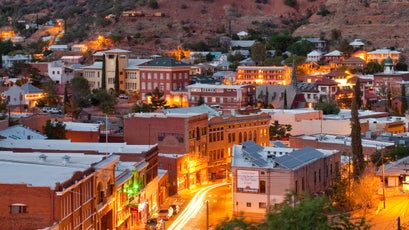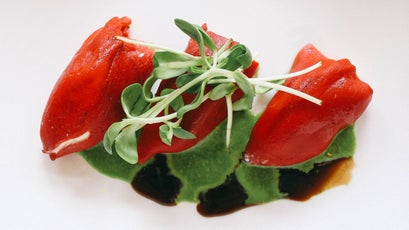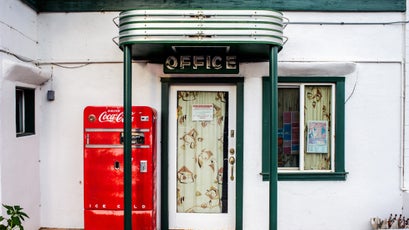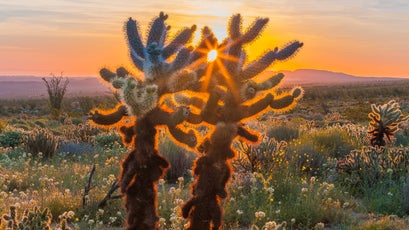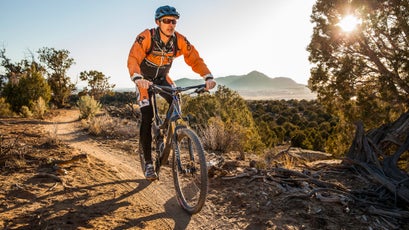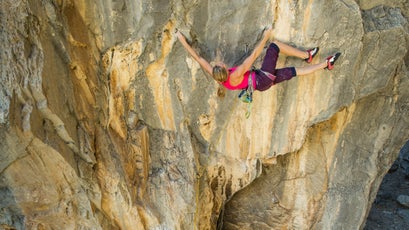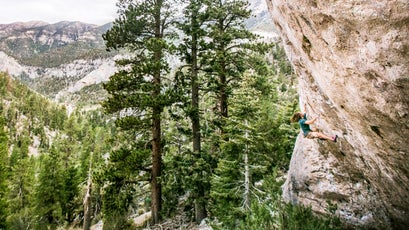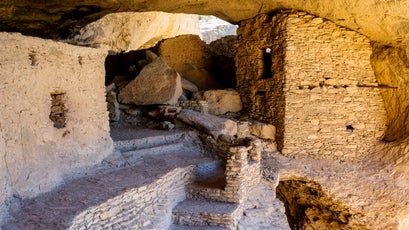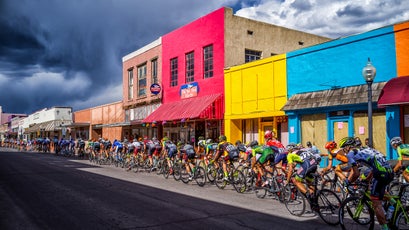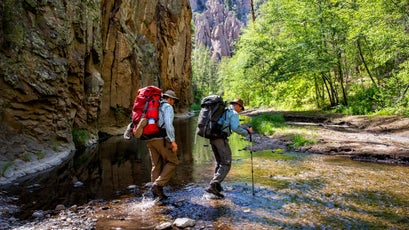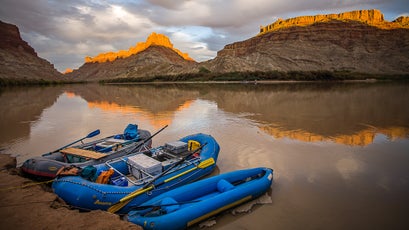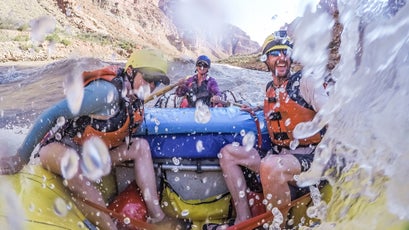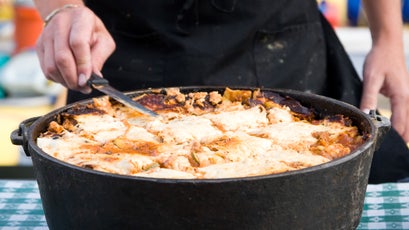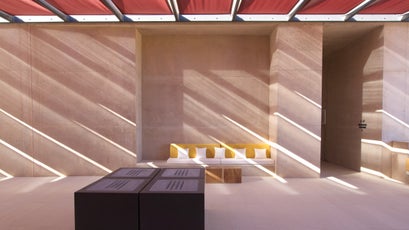#1. Kelvin to Superior, Arizona
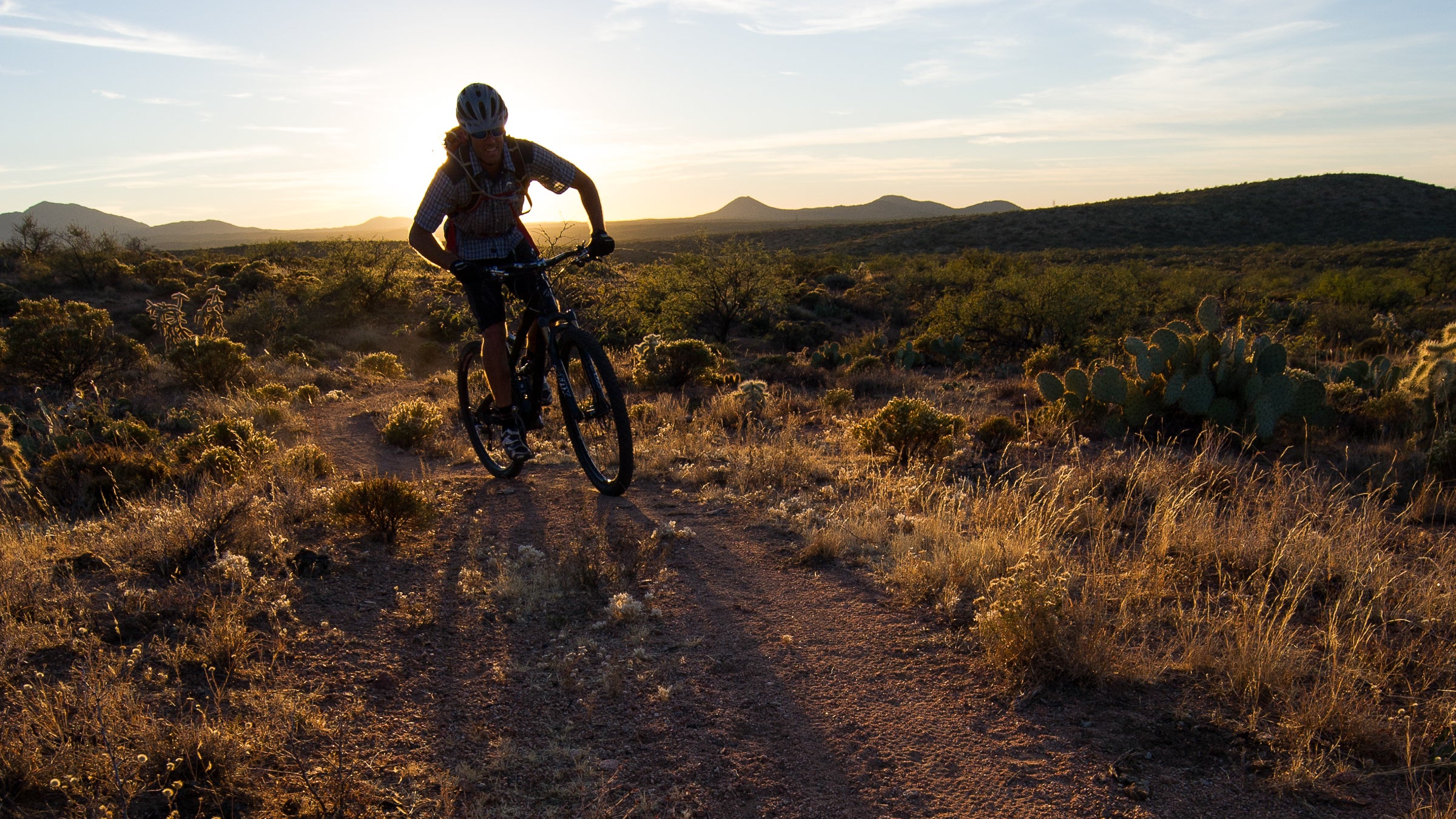
Don’t Miss: Mountain Biking, Chimichangas
Running 800 miles between Utah and Mexico, the Arizona Trail offers countless stretches of high-quality mountain biking. And of the Arizona Trail Association’s 43 total passages, the 38-mile segment southeast of Phoenix—passages 16 and 17—is the finest. Beginning at the Kelvin Bridge, several hours’ worth of precipitous singletrack bob and spike like an EKG chart above the Gila River before the trail turns north, climbing a dirt path into a cirque of golden granite needles and towers. Reaching the peak feels like riding into Narnia, especially when the buff thread gives way to a ten-mile, high-speed bedrock descent. Racers in the grueling Arizona Trail 300, which follows this path to Superior, sometimes wonder if they hallucinated how good it was. But this is the genuine article, best finished off with icy Tecates and greasy chimichangas at Los Hermanos in Superior, a few miles from the trailhead. —Aaron Gulley
#2. Chiricahua National Monument, Arizona
Don’t Miss: Bird-watching, Bluegrass
Though visitors come for the dark skies and the critters—coatimundis, javelinas, and a plethora of rare birds—the biggest reason to visit Chiricahua National Monument is the rocks: an alien wonderland of towering rhyolite-tuff spires and hoodoos resembling tops frozen in midspin. Reserve a site at Bonita Canyon Campground, hit the 17 miles of hiking trails, and don’t forget to bring your binocs; if you’re lucky, you might spy an elegant trogon or a violet-throated hummingbird among the alligator junipers and ponderosas. You’ll understand why Apache chiefs Geronimo and Cochise were drawn to the area’s wildlife and edible plants. For more Old West vibes, head southwest to the mining town turned funky arts burg of Bisbee, 70 miles from Chiricahua and only eight miles north of the Mexico border. Set at 5,500 feet amid red hills, 140-year-old Bisbee was once the biggest town in the state; today its charm lies in chilling with a cold one while listening to banjo pickers at St. Elmo’s bar. Order a pie at Screaming Banshee Pizza or splurge at renowned Café Roka, a locally sourced, art-deco-style eatery. Then check into a decked-out Airstream at the , just outside town, and go on forgetting that the 20th century ever happened (from $85). —Will Palmer
#3. Anza-Borrego Desert State Park, California
Don’t Miss: Hiking, Gravel Riding, Wildflowers
The American Southwest teems with unexpected treasures that take just a bit of boot rubber to discover. Many are within or just beyond the boundaries of some of the region’s cities. (Hell, Edward Abbey’s bones are resting below a nameless mesa in Arizona’s Cabeza Prieta National Wildlife Refuge, a few hours from Tucson.) Others are harder to find yet reward travelers with some of the last grand landscapes in the country. Years ago, I paid my first visit to California’s 940-square-mile Anza-Borrego Desert State Park, 90 miles northeast of San Diego, on the westernmost lobe of the Sonoran Desert.
Driving into the Borrego Valley, my group made the 4,000-foot plunge from the Peninsular Ranges into what seemed like another planet—enormous canyons scythed down from the Santa Rosa Mountains, valley bottoms cut into arroyos by summer monsoons, and an ancient sea floor whose tallest peaks now catch snow. I returned to those same peaks when I traveled to Anza more recently, during the winter, to backpack in Cougar Canyon. My friends and I hiked alone, eventually tracking an improbable rill of water that emerged from the top of the canyon. We followed it upstream until the gorge opened into a 20-foot waterfall, and everywhere we looked we saw the prints of coyotes, mountain lions, and indigenous bighorn sheep that had come to the water to drink. That evening, while the wind whipped eddies around the canyon head, I laid back on my bag atop a bed of granite and ogled the endless night sky. Though thousands of people visit during wildflower season, the park and its closest town, Borrego Springs, are otherwise low on crowds, and the area offers a surprisingly diverse array of restaurants. During my recent visit, after camping, we stayed in a rental house in town, fueling up on chorizo-and-potato burritos at Los Jilbertos and Kicking Horse coffee from Center Market. And with hundreds of miles of classic road, gravel, and fat-bike riding, the park makes it very tough to leave in more ways than one. —Brad Rassler
#4. Phil’s World, Colorado
Don’t Miss: Mountain Biking, German Lager
Colorado mountain biking can be brutally up and down, but Phil’s World is the fast and fun exception. Sitting at 6,360 feet, on BLM and state trust acreage some 40 miles west of Durango, this 27-mile singletrack system has sweeping views of Mesa Verde National Park and the La Plata Mountains. Cyclists from beginner to advanced rave about Rib Cage, the five-mile interior hardpack loop that rides like a slick luge run through arroyos. Outer loops like Lemon Head and Stinking Springs mix flow trail with technical, Moab-like bedrock riding, ledge drops, and boulder waterfalls. It’s possible to ride year-round, but shoulder-season months like November are ideal, when everything at higher altitudes is too wet. Stay in Durango at the (from $65), where mountain bikes are welcome and the new owners have rehabbed most of the 25 rooms. On the way to the trail, stop at Fahrenheit Coffee Roasters in Mancos for a pulse-quickening espresso and rent a hardtail, full-suspension, or fat bike at ($45 to $55) in Cortez; then it’s time to ride. After a few dizzying loops, head back to Durango for a Pils World German lager at Ska Brewing before indulging in a grass-fed, 21-day wet-aged T-bone at Ore House. —Stephanie Pearson
#5. Yampa River, Colorado
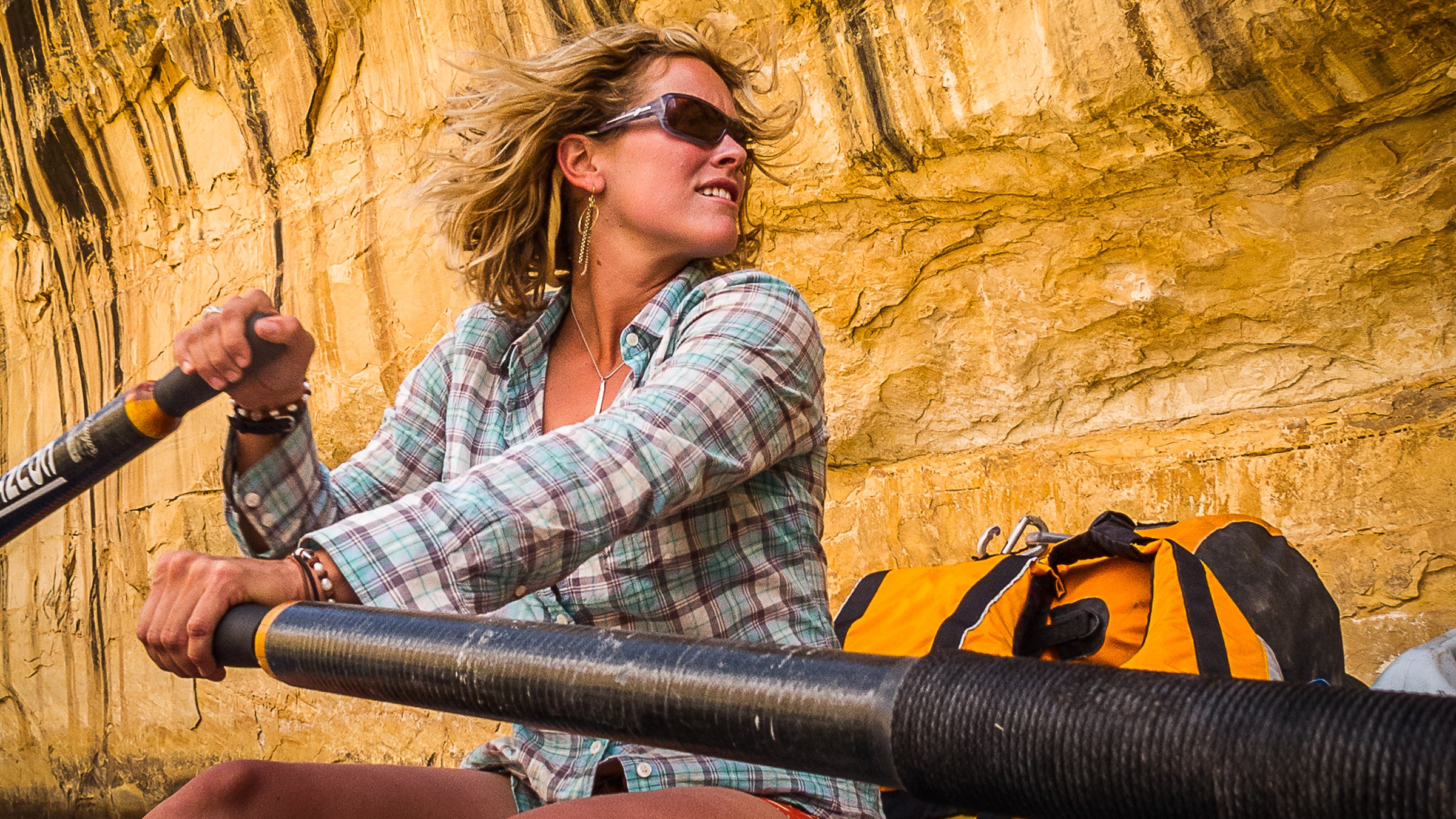
Don’t Miss: Rafting, Fishing, Petroglyphs
The last major free-flowing waterway in the Colorado River Basin, the Yampa packs Zion-esque scenery, a string of Class III–IV rapids, and an unrivaled level of solitude. In just four days, you can paddle past striped canyon walls that stretch up to 1,200 feet and amphitheaters full of ponderosas that preside over the river like a patrician audience, take side hikes to fossil and petroglyph sites, and visit an old cattle rustler’s cabin. The natural cycles of this rare untamed river favor native plants and fish; they also form wide sandy beaches that are perfect for building campfires and spotting shooting stars. It’s easy to see why are among the toughest to snag in the West. If you don’t win the permit lottery, sign up for a trip with the outfitter ($1,049 for four days), which starts in the Deerlodge Park area of Dinosaur National Monument. —Kate Siber
#6. Mount Charleston, Nevada
Don’t Miss: Sport Climbing, Hiking
Mount Charleston, elevation 11,916 feet, is a world apart from the Las Vegas Strip two miles below—and even from the recreational crowds at increasingly popular Red Rock Canyon. “You get up there and it’s like being in a European mountain town,” says Randy Leavitt, one of the country’s most accomplished climbers, who has put up 5.14’s in the area. To Travis Graves, co-owner of Las Vegas’s Desert Rock Sports, the Mount Charleston Wilderness and surrounding Spring Mountains are the city’s saving grace, especially in summer, when temperatures up on the peaks can be 20 degrees cooler than the valley floor. Graves advises climbers new to the spot to acquaint themselves with the short, relatively moderate Yellow Pine cliff—which ranges from 5.9 to 5.12—before moving on to classics like the three-pitch 5.11+ Imaginator. —B.R.
#7. Gila National Forest, New Mexico
Don’t Miss: Road-tripping, Camping, Hot Springs
Let us now praise Aldo Leopold, who advocated for the Gila to become the nation’s first wilderness area. Home to some of the most stunning terrain in the Southwest, its wide open spaces and empty mountains make it perfect for road-tripping and exploration. Start in the funky small town of Truth or Consequences, 150 miles south of Albuquerque on I-25, where you can stock up on supplies and take a dip at Riverbend Hot Springs on the Rio Grande. Then head west on Highway 152 toward the in Kingston (population 32). The lodge is a great launching point for hikes, including the spectacular nine-mile Black Range Crest Trail to Hillsboro Peak. If you’re lucky, your stay might overlap with a visit from national banjo champion Jeff Scroggins and an impromptu jam session (from $95). Leaving Kingston, head southwest to camp among the surreal volcanic rock formations at City of Rocks State Park, then soak at nearby Faywood Hot Springs. Next stop: Silver City, a charming off-the-grid town in the heart of the Gila. Base yourself at (from $170), or pitch a tent at the Grapevine Campground, which offers easy access to Gila Cliff Dwellings National Monument, a 13th-century housing site built into caves by nomadic tribes that offers a unique perspective on the region’s vastness. On your way back to Albuquerque, detour through White Sands. Not much beats sliding down the massive dunes. —Mary Turner
#8. The Lightning Field, Catron County, New Mexico

Don’t Miss: Solitude, Outdoor Art
Don’t let the name throw you. The 400 stainless-steel rods that make up this monumental work of outdoor art have never been touched by any electrical discharges from the sky. The real emphasis of this place isn’t on conductivity. Overnight guests of The Lightning Field, built by sculptor Walter De Maria in 1977 and maintained by the Dia Art Foundation, are encouraged to simply sit or walk in and around the work—particularly at dawn and dusk—as tiny gradations of shadow, light, and color hitting the nearby Mogollon Mountains are reflected in the rods, which average about 20 feet in height. The foundation provides transportation from the tiny town of Quemado, through grasslands and down unmarked dirt roads to the edge of the grid and the site’s small three-bedroom cabin, which has no cell service. (There’s a 911-ready phone available for emergencies.) The cabin sleeps six, and you can book one bed or reserve the entire thing. Meals are provided by Dia staff and include simple dishes like fresh granola and vegetarian cheese enchiladas. for the season, which runs from May to October, begin in February and go fast (from $150). —Reid Singer
#9. Cataract Canyon, Utah
Don’t Miss: Rafting, Kayaking, Stone Ruins
Less than 200 miles up the Colorado River from the Grand Canyon, Cataract has the same towering red-rock walls, beach camping, and thundering whitewater of its more famous cousin. But the permitting process is much less arduous: river runners can take their pick of launch dates from four months to as little as two days in advance. The put-in is just downstream from Moab, near Canyonlands National Park; from there, paddle your raft to Lake Powell, 95 miles away, with breaks to scope ancient Anasazi handprint pictographs and stone ruins at places like Lathrop Canyon. Though the first few days are mostly flatwater, you’ll encounter 29 sets of rapids starting on day three, including the Class IV Big Drops. Run them with care come springtime: the river can be so swollen with snowmelt at these spots that the Park Service often stations a motorboat just below the Big Drops to herd flipped rafts out of the frigid current. Camp at Spanish Bottom, right above Brown Betty rapids, and hike up to the red-and-white-banded rock spires of the Doll’s House to watch the sun set 1,000 feet above the river. are $20 per person, plus a $30 reservation fee. (For guided service, hosts four-day trips from April through October for $1,649.) —Frederick Reimers
#10. Goblin Valley State Park, Utah
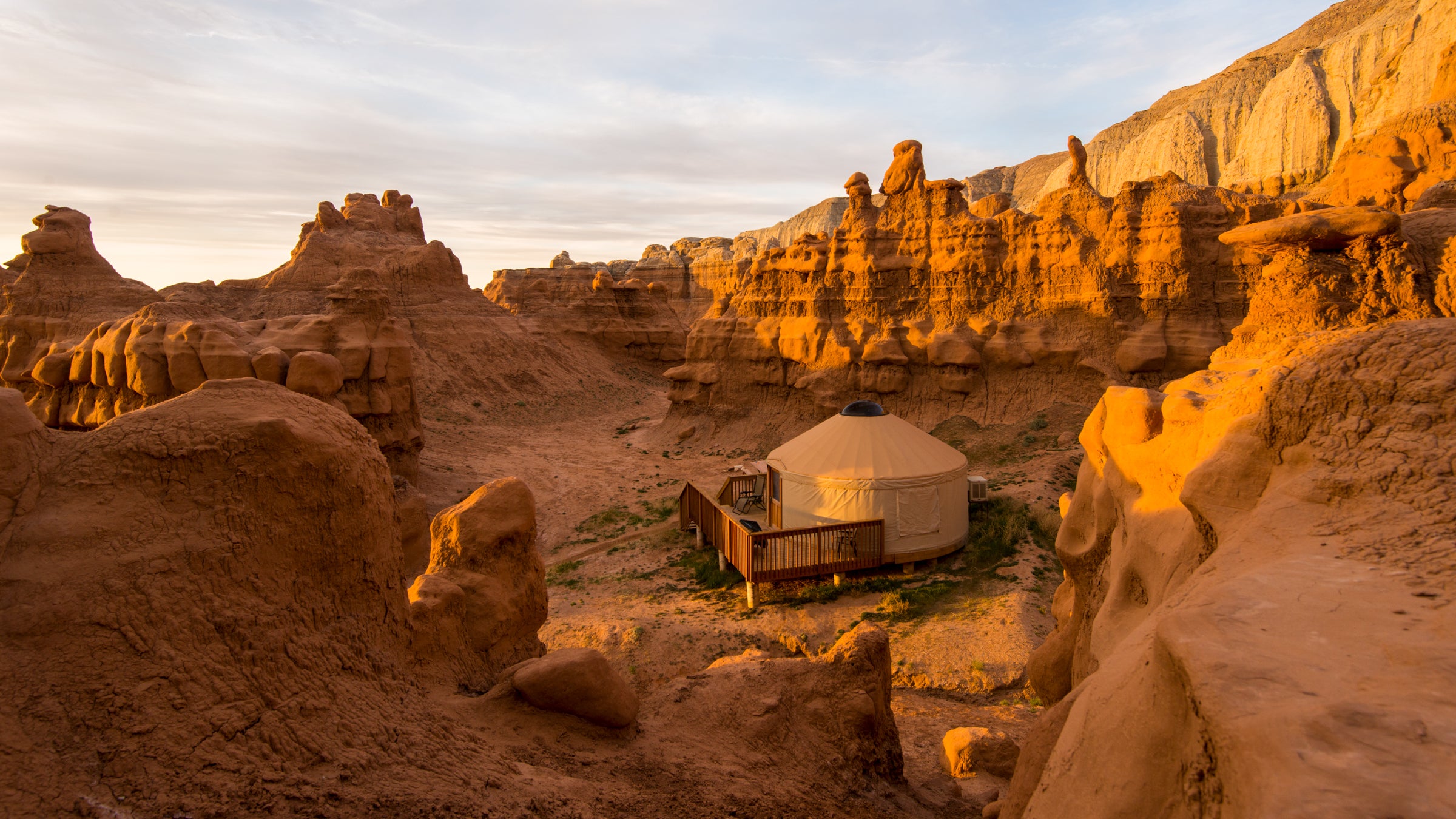
Don’t Miss: Singletrack, Hiking, Hoodoos
It may be dwarfed by Capitol Reef National Monument to the west and Canyonlands National Park to the southeast, but this 3,654-acre state park, named for an abundance of ghoulish hoodoos, packs a lot of punch for its size. Its seven-mile singletrack system, built in 2015, offers five mountain-biking loops, affording views of steep-sided canyons below. Hikers have six miles of their own trails or can head to Valley of the Goblins, part of the Henry Mountains, a highlight of which is Goblin’s Lair, a 100-foot natural sandstone slot canyon that requires technical gear and a backcountry permit to access for canyoneers. The offers guided trips to the cave. Because this park is so isolated—it’s located on a remote corner of the Colorado Plateau, 223 miles southeast of Salt Lake City—the clarity of the sky at night is one of its most impressive features. In 2016, it received the International Dark-Sky Association’s Gold Tier certification. Take full advantage and pitch a tent at the 25-site ($25;), or upgrade to a yurt with a propane grill, a deck, heat, and A/C ($100). —S.P.
#11. Amangiri Resort, Utah
Don’t Miss: Splurging, Climbing, Plunge Pools
As arresting as the surrounding Colorado Plateau, southern Utah’s mixes elegance and adrenaline. The 34-suite property sits on its own 600-acre playground at the base of a 100-foot-high canyon in the vicinity of three national parks: Zion, Bryce, and Grand Canyon. By day, climb the resort’s seven via ferrata routes with a guide, paddleboard Lake Powell, or hike the hoodoos of Bryce Canyon—the 25,000-square-foot spa will ease any discomfort upon your return. Enjoy flotation therapy or ten variations of massage, then cool off in a private plunge pool before dining al fresco on wild greens, foie gras terrine, and freshly caught rainbow trout. Oh, and switch off your cell phone: every vantage and architectural detail is Instagram-worthy here and will only drive you to distraction. From $1,400. —S.P.
#12. Palo Duro Canyon State Park, Texas
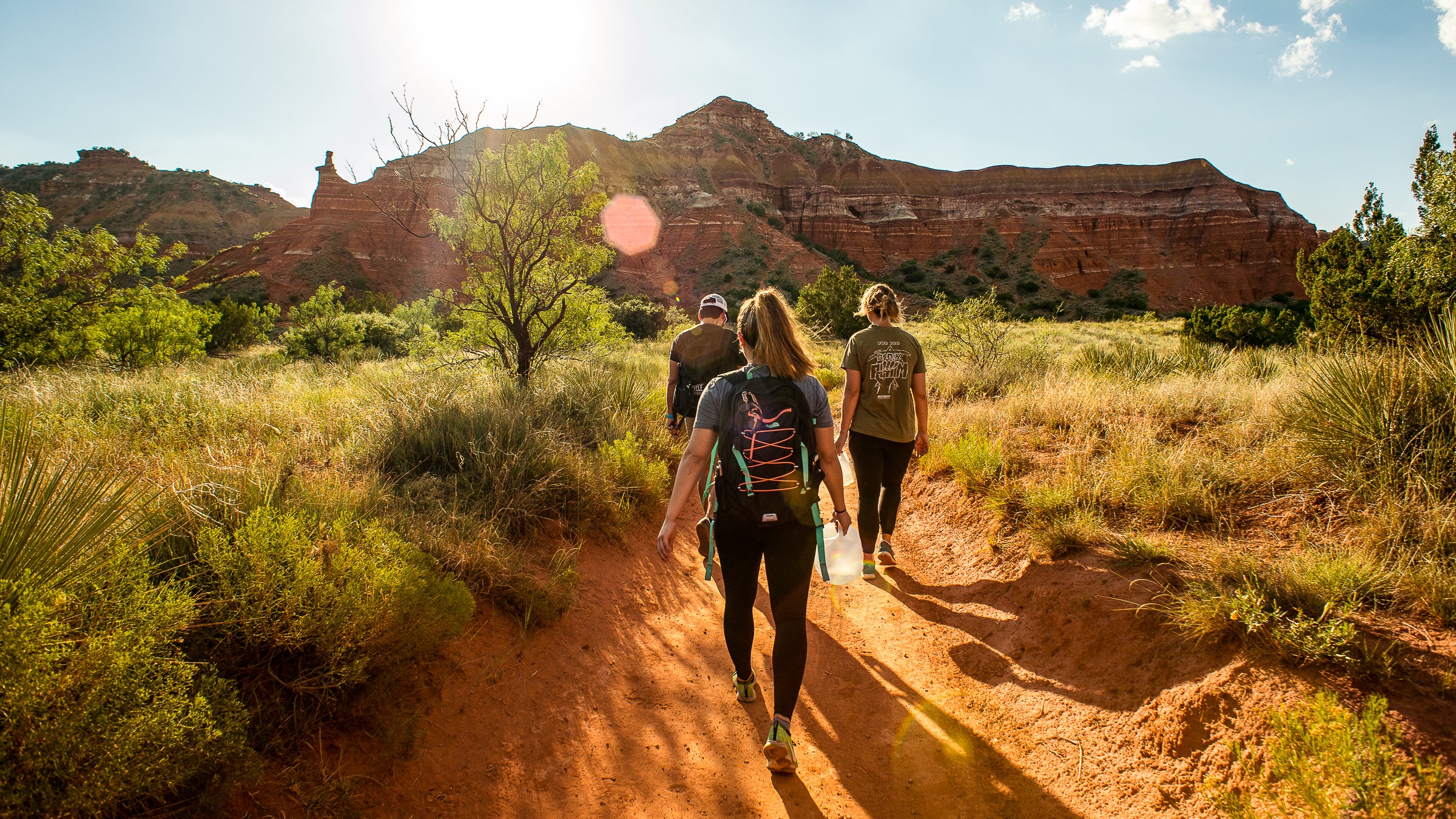
Don’t Miss: Mountain Biking, Cabins, Intoxicating Sunsets
Home to the second-largest canyon in the U.S., Georgia O’Keeffe once called this rugged 120-mile-long gorge within the Texas panhandle a “seething cauldron, filled with dramatic color and light.” Come equipped—bike rentals are hard to come by in the town of Canyon, though less so in nearby Amarillo—and you can glide down the park’s 12 mountain-biking trails, including the fast and flowing Givens, Spicer, and Lowry, ranked number one in Texas by Singletracks.com. One of the most dramatic sights in the park is the Lighthouse, a 300-foot freestanding column of layered rock that is most striking at sunset. Or follow one of the smaller footpaths up to the southern rim and watch as the entire canyon shifts between deep shades of red, pink, and purple. Grab provisions in advance at Market Street in Amarillo, and spend the night in one of three rustic rim-top built by the Civilian Conservation Corps in the 1930s (from $110). —Nicholas Hunt

